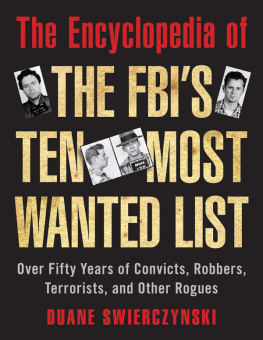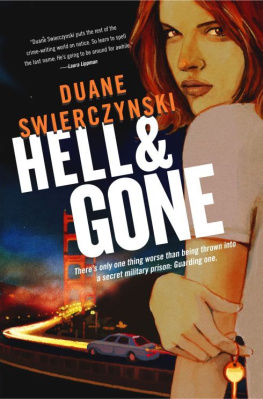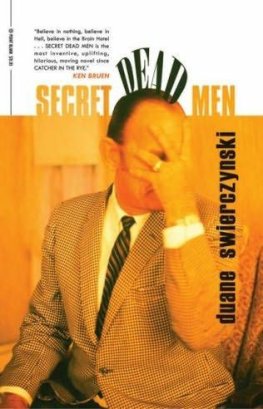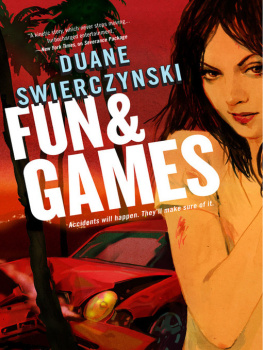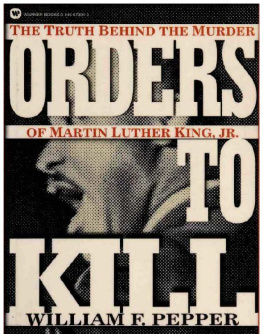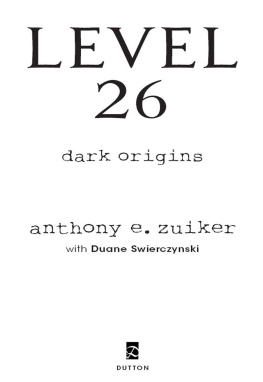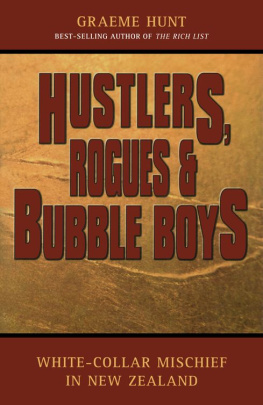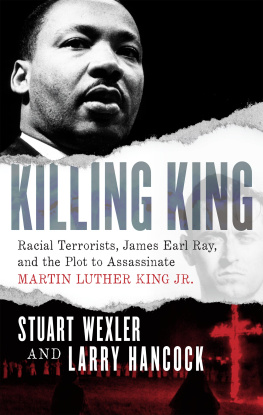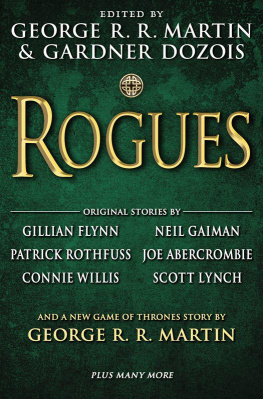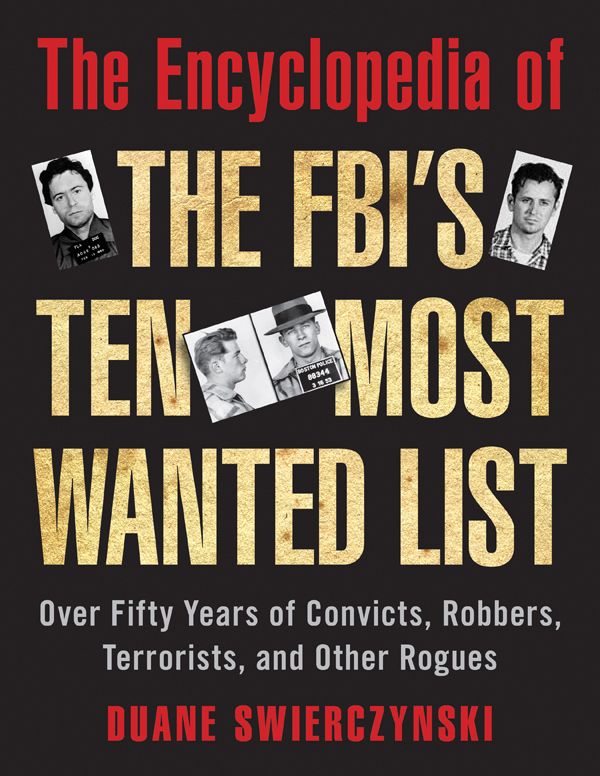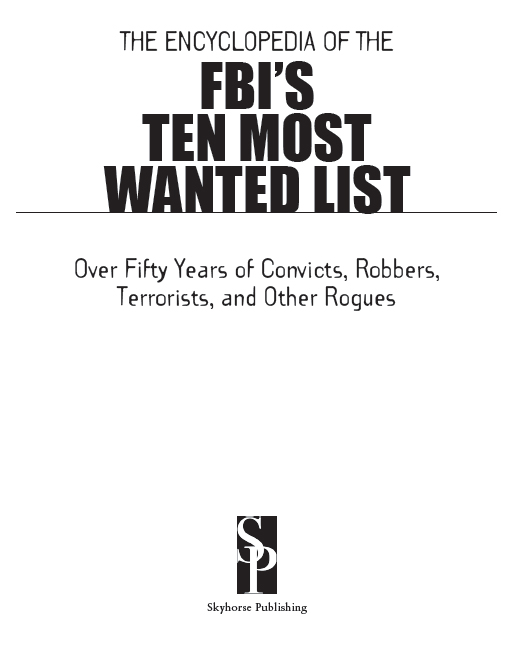
Copyright 2004, 2014 by Duane Swierczynski
All Rights Reserved. No part of this book may be reproduced in any manner without the express written consent of the publisher, except in the case of brief excerpts in critical reviews or articles. All inquiries should be addressed to Skyhorse Publishing, 307 West 36th Street, 11th Floor, New York, NY 10018.
Skyhorse Publishing books may be purchased in bulk at special discounts for sales promotion, corporate gifts, fund-raising, or educational purposes. Special editions can also be created to specifications. For details, contact the Special Sales Department, Skyhorse Publishing, 307 West 36th Street, 11th Floor, New York, NY 10018 or info@skyhorsepublishing.com.
Skyhorse and Skyhorse Publishing are registered trademarks of Skyhorse Publishing, Inc., a Delaware corporation.
Visit our website at www.skyhorsepublishing.com.
10 9 8 7 6 5 4 3 2 1
eISBN: 978-1-62873-906-0
Library of Congress Cataloging-in-Publication Data is available on file.
ISBN: 978-1-62636-546-9
Printed in China
This book is for Walter and Barbara Swierczynski.
I spent many years on the run, but you never stopped making me feel most wanted.
Contents
Acknowledgments
Here are my Top Ten Acknowledgments: (#1) Meredith, Parker, and Sarah Swierczynski, who understood when I had to go on the lam for long periods of time during the writing of this book. (#2) Gary Goldstein, who put me on the lineup. (#3) April White, who not only served as my research chief for this project, but went far beyond the call of duty, journeying deep into the strange lands of dusty FBI archives, Freedom of Information Act Requests, and the U.S. Library of Congress. This book literally could have not been finished without her. She runs an excellent resource for writers at www.KnowMoreResearch.com. (#4) David Hale Smith, a known associate of writers, editors, and other lowlifes. Approach with extreme caution. (#5) James Chambers, the most patient man on the face of the Earth. He stuck with me on this project, even though I remained at large longer than most Top Ten fugitives. (#6) Ernie Porter of the FBIs Fugitive Publicity Unit, who was gracious with every annoying question, and extremely helpful in finding the answers. (#7) Linda Vizi of the Philadelphia FBI office, who gave me great insights into the inner workings of the Top Ten program. (#8) Richard Rys, for late night fugitive missions in Liberty City. (#9) Ron Geraci for his contagious enthusiasm. And finally (#10), Deacon Luke Elijah, for his spiritual guidance. Also be on the lookout for Patrick Michael Mitchell, Tracy Reynolds, Rex Tomb, Loren Feldman, Jordan Matus, Larry Platt, Tom McGrath, Jimmy and Sharon Allen, Paul and Cindy Barsky, Bro. Gerry Molyneaux, Lynne Texter, Michael Newton, Jason Rekulak, Valentine OConnor, Louis Wojciechowski, Joel Fogelson, and all of my friends and family.
Give me your worst:
An Introduction
It was February 1949. A United Press crime reporter was looking for something to fill a column. Then an idea popped into his head, and he called an FBI agent he knew. If the FBI could catch the nations 10 worst criminals, asked the reporter, who would they be? A few days later, the FBI sent the reporter a list of 10 men, along with their photographs and details. The headline FBIs MOST-WANTED FUGITIVES NAMED screamed across the front page of the Washington Daily News on February 7, 1949. The story:
The FBI today listed 10 men as the most-wanted fugitives not at large. They are two accused murderers, four escaped convicts, a bank robber, and three confidence men. There are about 5,700 fugitives from justice in this country. Of these, the FBI said it considered these to be the 10 most potentially dangerous. The FBI does not label any one of them as Public Enemy No. 1. But in response to a United Press inquiry, it compiled the list in the hope that this may lead to their arrest. Anyone knowing the whereabouts of these men should communicate immediately with the nearest FBI office or the local police .
Following this brief introduction were 10 stark, black-and-white photographs of men. Some looked straight into the camera, practically daring you to blink first. Two of the men wore faint smiles; another looked like he was snickering at some private joke. One rotund balding man was shown with his jaw clamped down on a pipe, looking off into the distance. Still others had cold, dead stares, utterly devoid of humanity. These 10 men were the public faces of crime in 1949. Names were named, along with birthplaces, brief descriptions of their criminal offenses, and lastbut not leasttheir height and weight.
The byline belonged to a writer named James F. Donovan; but it is still unclear if he is the wire service reporter who first asked the FBI to give me your worst. (Other accounts name the reporter as Sam Fogg.) The byline didnt matter: those 10 felonious mugs did. The article was an instant sensation, capturing the publics imagination. For the first time ordinary civilians felt empowered to do something about the violent crime that has been on the rise in their towns and neighborhoods. All they had to do was take a closer look at these mug shots, then see if anybody around fit the description. Might a vicious killer be hiding in the boardinghouse next door? Working at the gas station down the street? Sitting one barstool away? That single list of 10 resulted in so much media coverage and public supportnot to mention the capture of two fugitivesthat FBI director J. Edgar Hoover institutionalized the Top Ten the very next year.
Wanted posters are nothing new; Americans have been eyeing the mug shots of suspicious individuals since the time of the Old West. And rankings arent new either. Back in the 1930s, Depression-era newspaper readers thrilled to stories of the FBIs G-Men duking it out with Public Enemy No. 1, be it Al Capone or Al Karpis or whoever Hoover had decided fit the bill. However, this was the first time the FBI laid out 10 bad guys at once, and actually asked for the publics assistance. It was the FBIs most shining public relations moment, and the Ten Most Wanted list became one of the most successful law enforcement tools in the country.
From its inception on March 14, 1950, through January 2000, a total of 458 bad guys have made the FBIs Most Wanted list. An astounding 94 percent have been captured. The first Top Tenner (as the Feds refer to them) was caught only two days after the list was announced. Others turned themselves in within hours of making the list. Once we placed fugitives on the Top Ten, publicity was such that theyd even call in to surrender, said Agent Carter DeLoach, Hoovers number three man in the 1950s and 1960s. During the first year of the program, seven Top Tenners were caught; four of them thanks to tips from the public. In 1968 alone a record 33 fugitives were brought to justice.
The complete list of Top Tennerswhich youll find in the pages to followreads like a rouges gallery from Hell. On it youll find charming psycho Ted Bundy, Martin Luther King Jr. assassin James Earl Ray, controversial murderer Leonard Peltier, World Trade Center bomber Ramzi Ahmed Yousef, glam spree-killer Andrew Cunanan, and this generations most feared name: Usama Bin Laden. Over the past 50 years, the types of Top Tenners have changed with the times. In the 1950s the list was full of murderers and bank robbers; in the 60s youd find political subversives, black militants, and antiwar radicals; in the 70s terrorists and organized crime leaders; in the 80s drug lords; recently terrorists and abortion-clinic gunmen. At any given time, the Ten Most Wanted is a snapshot of Americas crime concerns, explained Rex Tomb, current head of the Fugitive Publicity Unit.

